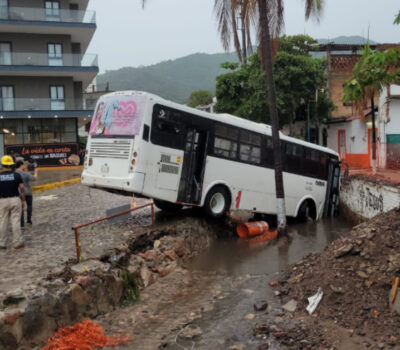Mexico’s Pacific coast is in the crosshairs of Hurricane Patricia, which became the most powerful tropical cyclone ever measured in the Western Hemisphere on Friday morning as its maximum sustained winds reached an unprecedented 200 mph (320 kph).
The hurricane is forecast to make landfall in the Mexican state of Jalisco Friday evening as a catastrophic Category 5 hurricane capable of causing widespread destruction. Residents and authorities in Mexico are rushing to prepare for what will likely be the strongest hurricane to ever make landfall on that country’s Pacific coastline.
At 4 a.m. CDT, the eye of Hurricane Patricia was about 145 miles (255 kilometers) southwest of Manzanillo, Mexico, and was moving north-northwest at 12 mph (19 kph).
In addition to its unprecedented 200-mph (320-kph) sustained winds, Hurricane Patricia now holds the record for lowest pressure in any hurricane on record. With a minimum central pressure of 880 millibars (25.99 inches of mercury) at the 4 a.m. CDT advisory, Patricia broke the record of 882 millibars set by Wilma almost exactly 10 years ago.
Data from an Air Force Hurricane Hunter airborne reconnaissance mission late Thursday night provided critical data demonstrating the extreme intensification of Hurricane Patricia in near-real time.
Unprecedented Among Pacific Hurricanes
Hurricane Patricia became the strongest Pacific hurricane on record shortly after midnight CDT early Friday. Air Force Hurricane Hunters had flown through the eye of Patricia and reported a sea-level pressure of 894 millibars as measured by a dropsonde inside the eye itself. Wind measurements suggested that the pressure measurement was not in the exact center of the eye and was probably not the absolute lowest pressure, prompting NHC to estimate the minimum central pressure at 892 millibars in its special 12:30 a.m. CDT advisory.
Tropical cyclone strength comparisons are typically based on minimum central pressure. At 892 millibars, Patricia shattered the Eastern Pacific basin’s previous record of 902 millibars set by Hurricane Linda in 1997.
While a number of typhoons in the western North Pacific have been stronger, Patricia is by far the strongest hurricane in any basin where the term “hurricane” applies to tropical cyclones – namely, the central and eastern North Pacific basins and the North Atlantic basin, which includes the North Atlantic Ocean itself plus the Gulf of Mexico and Caribbean Sea.
Exceptionally Dangerous Situation in Mexico
The eye of Patricia is expected to move onshore Friday night in the Mexican state of Jalisco, which includes the popular coastal resort city of Puerto Vallarta as well as the inland metropolis of Guadalajara, Mexico’s second-largest city.
The adjoining states of Colima and Nayarit will also feel the effects of Hurricane Patricia, which in addition to catastrophic winds will also bring a formidable flood threat. Depending on the exact track of Patricia’s eye, the resort city of Manzanillo may experience destructive winds, and is very likely to see flooding rainfall, dangerous storm surge and large, battering ocean waves breaking onshore.
Mexico's Pacific coast is in the crosshairs of Hurricane Patricia, which became the most powerful tropical cyclone ever measured in the Western Hemisphere on . . .











